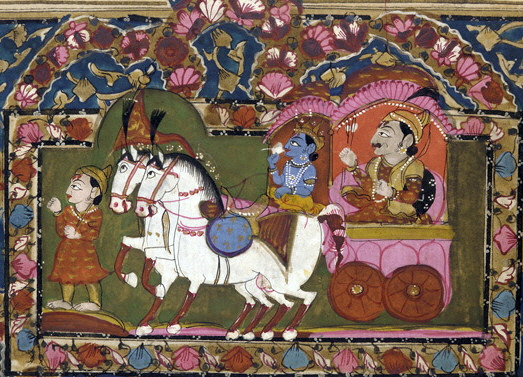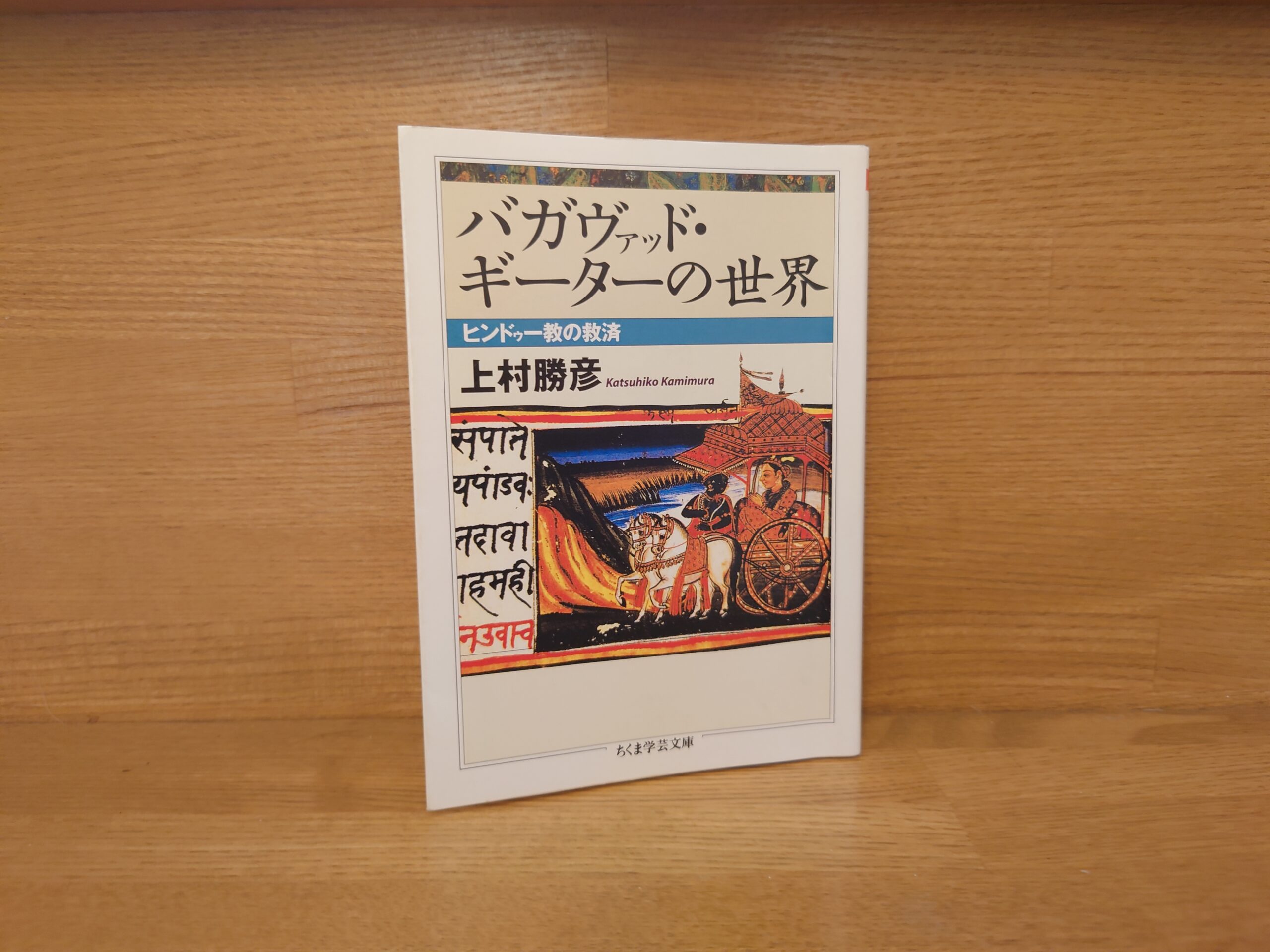Katsuhiko Uemura, "The World of the Bhagavad Gita: The Salvation of Hinduism" Summary and Comments - A great book to learn about Japanese culture and its connection to Mahayana Buddhism!
Introduced here is "The World of the Bhagavad Gita: Salvation in Hinduism" by Katsuhiko Uemura, published by Chikuma Shobo in 2007.
Let's take a quick look at the book.
In the Mahabharata, one of the great epics of ancient India, the Bhagavad Gita (Song of God) is a teaching given by the sage Krishna (actually an incarnation of the Supreme Being) to inspire the hero Arjuna, who was deeply troubled by the fighting among his own race and had lost the will to fight. This is a book of faith that describes the futility of human existence and explains the way to attain liberation while fulfilling one's duties in this life. It also explains the roots of Teishakuten, Benzaiten, Daikokuten, Bishamonten, and Kishimojin, and reveals the influence of this supreme scripture, which has been recited beyond sectarianism, on Buddhism, Japanese religious culture, and the way of thinking of the Japanese people.
AmazonProducts Page.

This work is India's highest book of thought, written within the great Indian epic, the MahabharataThe Bhagavad Gita.This will be a commentary on the
As noted in the product introduction above, the author points out the connection to Japanese culture and Mahayana Buddhism in this Bhagavad Gita.
The book opens with a discussion of how Indian deities such as Indra (Teishakuten), Yama (Yama), Saraswati (Benzaiten), and Brahma (Brahma) have permeated Japanese culture. Immediately afterwards, he states This is an extremely important point for studying Buddhism and Japanese culture, so I will read it carefully.
I hope the above has shown you how the Japanese have worshipped and continue to worship Hindu deities on a daily basis. We live our lives surrounded by the gods of Hinduism.
We do not, however, simply worship Hindu deities. In fact, the prevailing ideas of Hinduism entered Japan through Buddhism and had a profound influence on Japanese religion and culture. You may not think so, but I believe that the Japanese have accepted the best parts of Hinduism through Buddhism. It is no exaggeration to say that the Japanese are "hidden Hindus," so to speak. One of the purposes of this book is to show this fact.
The Bhagavad Gita, the subject of this book, is a representative Hindu scripture. Roughly speaking, it is thought that ideas such as those taught in this scripture influenced Mahayana Buddhism at a certain time. It is the idea that the Absolute, or the Supreme Being, is omnipresent and pervades everything, even individual things. In other words, the nature of God is within each of us. This idea strongly influenced Mahayana Buddhism at a certain time, directly or indirectly, and the result was thetathagatagarbha (buddha-womb, the potential within all living things to become a buddha)It can be said that it is an idea. All people have the potential to become a Tathagata, all people have the potential to becomeBuddha-natureThis is the idea that there is a "Buddha," "Shinnyo," or "Goddess of Mercy. This idea came to Japan through Buddhism, and was later adopted by the Tendai sect and other schools of Buddhism, which held that we are the Buddha, or Shinnyo, as we are.main culpritIt has had a profound influence on Japanese religious culture and the way of thinking of the Japanese people in general. For example, "Even though the Buddha is always present,present (e.g. government, administration)Imasama, such as "I will not be, that is, awarenaru" ("Ryohin Hisho"), spread throughout medieval Japanese society, and this way of thinking eventually permeated the populace.
Having made the above hypothesis - a hypothesis that is extremely certain - I will now examine its validity as I read and explain the "Bhagavad Gita".
Chikuma Shobo, Katsuhiko Uemura, The World of the Bhagavad Gita: Salvation in Hinduism, p. 21-22
It is no exaggeration to say that the Japanese are, so to speak, "hidden Hindus. One of the purposes of this book is to show that."
It's a shocking word, isn't it?
But in this book, these words feel all too real. The connection with Japanese culture and Mahayana Buddhism is explained very clearly.
This book is a commentary on the ancient Indian philosophy of the Bhagavad Gita, and as such, it may be a difficult book to get a hold of. However, I suggest that you switch your perspective and look at this book as a Buddhist book.
The book is designed to be read without any knowledge of ancient India or Indian thought. At the same time, the work is easy enough to understand that it can also serve as an introduction to Buddhism. This is a great book.
This is a highly recommended work that will give you a new perspective on Japanese Buddhism. Why not pick up a copy?
This is "Katsuhiko Uemura, "The World of the Bhagavad Gita: The Salvation of Hinduism" - A great book to learn about Japanese culture and its connection to Mahayana Buddhism! This was "The World of the Bhagavad Gita: The Hindu Relief
Next Article.
Click here to read the previous article.
Related Articles





































